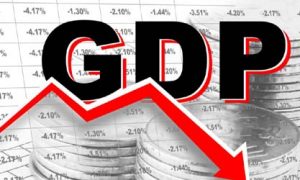 By Nageshwar Patnaik in Bhubaneswar, Septembe 25, 2021: The year 2021 is likely to end on a happy note for the Indian economy if prediction by former deputy chairman of erstwhile Planning Commission Montek Singh Ahluwalia and others are to be believed.
By Nageshwar Patnaik in Bhubaneswar, Septembe 25, 2021: The year 2021 is likely to end on a happy note for the Indian economy if prediction by former deputy chairman of erstwhile Planning Commission Montek Singh Ahluwalia and others are to be believed.
With two waves of Covid-19 pulverizing the Indian economy, the country went though a sudden and sharp contraction last year. The once-in-a-century pandemic struck the economy, when it was already too weak. In 2019-20, it grew 4 per cent, the clichéd Hindu rate of growth of the early decades after Independence.
Growth is still struggling to emerge from the virus’s second onslaught in the last quarter leading to spiraling prices and high unemployment rate. The consumer price inflation (CPI) has been fudging near the 6% mark since the start of the pandemic. RBI recently suggested that there is a reasonable probability of breaching the 6% inflation mark over the next few quarters.
Fragile growth for several years and the breaking out of COVID-19, has compounded unemployment. The unemployment rate persists at 8.8 per cent since 2017-18 according to the aggregate employment profile captured by the Periodic Labour Force Survey for July 2019-June 2020. The survey, which includes only one quarter of the pandemic, shows that the fraction of the labour force employed in agriculture increased 3.1 percentage points to 45.6 per cent from 42.5 per cent in the previous corresponding period (July 2018-June 2019).
More than half of this displacement is from education, recreation, cultural and sporting activities, salons, personal services and employment with private households. The shift from manufacturing employment is 0.9 points; here, the proportions employed decreased to 11.2 per cent of total workers from a stagnant 12.1 per cent in the two previous matching survey years.
However, because of the very large economic base, the distress has not been so perceptible. In fact, India’s economic base has come a long way since 1947 as its size of Rs 203 trillion does not make economic distresses as visible as back then, and it is better equipped to handle shocks. Ironically, what India has not achieved till now is a rise in the manufacturing sector share for the mass absorption of its surplus agricultural labour.
 The economy is now coming back on steam and India should reach beyond pre-Covid-19 levels of Gross Domestic Product (GDP) sustainably by this time next year, several experts including Montek Singh Ahluwalia aver.
The economy is now coming back on steam and India should reach beyond pre-Covid-19 levels of Gross Domestic Product (GDP) sustainably by this time next year, several experts including Montek Singh Ahluwalia aver.
The economy grew by an impressive 20.1 percent in the April-June quarter, backed by a very weak base of last year and a sharp recovery of the manufacturing and services sectors, notwithstanding a upsetting second wave of COVID-19 cases. However the GDP growth number generated a lot of flap and thrill about base effects and the resilience of the real underlying growth.
The Reserve Bank of India (RBI) has lowered the country’s growth projection for the current financial year to 9.5 percent from 10.5 percent estimated earlier, while the World Bank has projected India’s economy to grow at 8.3 percent in 2021. Nevertheless, these numbers indicate a strong, underlying economy.
Indian economy has bottomed out; formal sector may get back to pre-Covid level by year-end, according to Montek. “One of the main positives is that the economy has actually bottomed out. And the formal sector may be getting back to pre-pandemic levels by the end of this year, it will be different for different sectors, service sectors, etc,” he said adding that if the formal sector sees economic rebound, then the informal sector will also follow it. Nevertheless, a healthy economic rebound will largely depend on private sector investments in the coming months.
Exports of traded goods have decidedly broken the $30-billion-a-month and this trend has now persisted for the last six months since March. Till August last, India has already exported goods worth $164 billion, a number that was achieved only by November in the previous year.
With schemes like the Production Linked Incentive Schemes (PLIS) kicking in, low corporate tax rates for manufacturing units, and revival in global demand, India seems well positioned to meet its FY2022 target of $400 billion of goods exports. This will be a structural break from the less than $350 billion number over the last decade.
 The Goods and Services Tax (GST) collections have consistently remained above the Rs 1 trillion-a-month mark since October, except in June this year. Similarly, the direct tax collection numbers appear strong. The consensus profit after tax estimates for the companies listed on the stock exchanges suggest that profits in FY2022 could double from FY2021 levels—this will reflect in stronger direct tax collections also.
The Goods and Services Tax (GST) collections have consistently remained above the Rs 1 trillion-a-month mark since October, except in June this year. Similarly, the direct tax collection numbers appear strong. The consensus profit after tax estimates for the companies listed on the stock exchanges suggest that profits in FY2022 could double from FY2021 levels—this will reflect in stronger direct tax collections also.
India will be amongst the fastest growing nations of size, despite having been through a difficult phase of the second Covid-19 wave in the first two months of the fiscal year provided the momentum on exports front keeps continueing. Besides, the large fiscal space is expected to let the government spend and invest more, and the recent large fund-raising boom in the capital markets has slowly but steadily stepped up investments.
The Centre for Monitoring of the Indian Economy (CMIE) data base clearly shows that employment, especially the informal workforce, has been impacted by Covid-19. When an economy goes through a sudden and sharp contraction, as happened in the last year, it is bound to have an impact on jobs. However, with the economy now bouncing back to pre-COVID levels of GDP, jobs should start to come back.
The two major challenges faced by the Narendra Modi government is to rein in inflation and facilitate job creation and hopefully the policymakers will focus on these over the next few quarters.


Leave a Reply
Be the First to Comment!